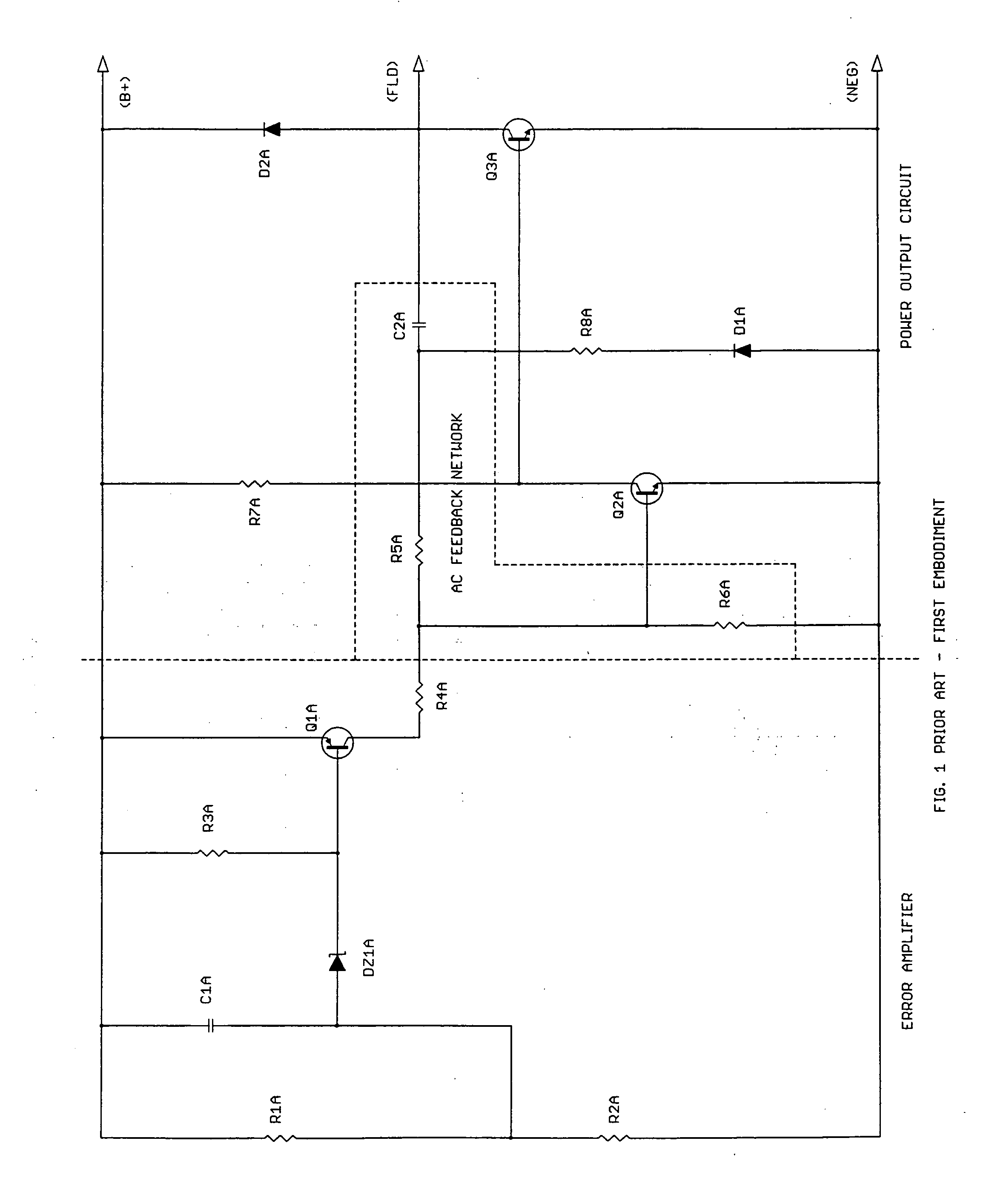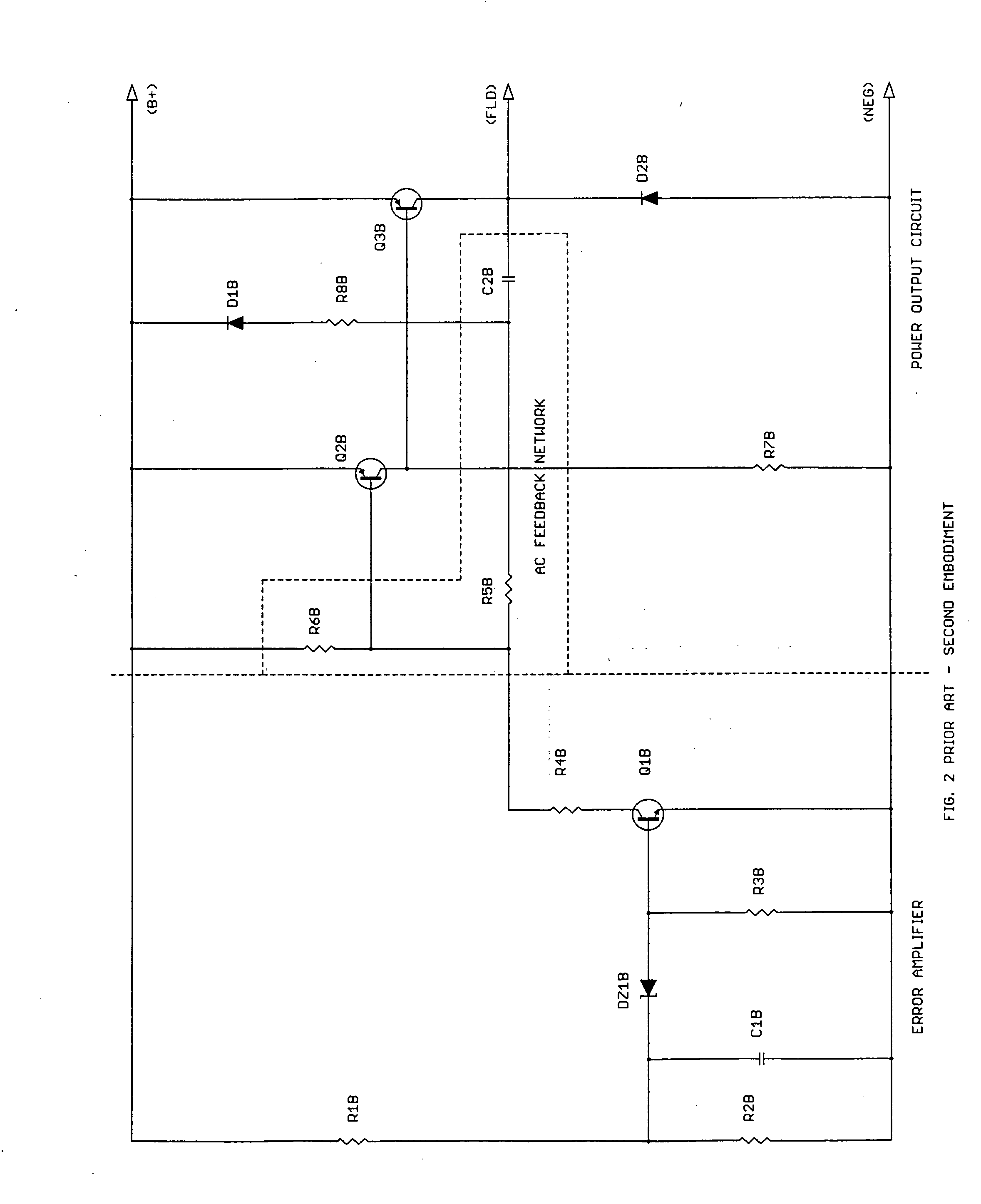Pulse-position-modulated vehicular alternator voltage regulator with dual AC-feedback networks, controlled "OFF" period and low inserted electrical noise
a voltage regulator and pulse position technology, applied in the direction of electric generator control, dynamo-electric converter control, control system, etc., can solve the problems of increasing the level of electrical noise introduced into the electrical system of the vehicle, not without limitations, and noticeable (and objectionable) voltage/current low frequency fluctuation at the alternator output, etc., to achieve tight voltage regulation, enhance performance, and improve performance
- Summary
- Abstract
- Description
- Claims
- Application Information
AI Technical Summary
Benefits of technology
Problems solved by technology
Method used
Image
Examples
Embodiment Construction
[0040]1. A functional description of a preferred first, proposed “A-type” (one end of the alternator field connected to “B+”) embodiment of the present invention referenced to the schematic drawing of FIG. 3 is as follows:
[0041]1.1 The network comprised by Q2C, R5C, R6C, R7C, R8C, R9C, D1C, D2C, C3C and Q3C is functionally a resettable, monostable multivibrator whose time constant is primarily determined by R5C, R6C and C3C. Diode D1C and resistor R9C reset capacitor C3C to a residual, well-defined reset voltage, every time power transistor Q3C goes into conduction. As taught in U.S. Pat. Nos. 5,325,044 and 5,744,941, diode D1C is the key element of the short-circuit protection function, Therefore, this short-circuit protection scheme doubles as a resettable, monostable multivibrator timer. The utilization of this built-in timer as an internal reference to make the response time of the voltage regulator independent of external variables is one of the objects of the present invention...
PUM
 Login to View More
Login to View More Abstract
Description
Claims
Application Information
 Login to View More
Login to View More - R&D
- Intellectual Property
- Life Sciences
- Materials
- Tech Scout
- Unparalleled Data Quality
- Higher Quality Content
- 60% Fewer Hallucinations
Browse by: Latest US Patents, China's latest patents, Technical Efficacy Thesaurus, Application Domain, Technology Topic, Popular Technical Reports.
© 2025 PatSnap. All rights reserved.Legal|Privacy policy|Modern Slavery Act Transparency Statement|Sitemap|About US| Contact US: help@patsnap.com



